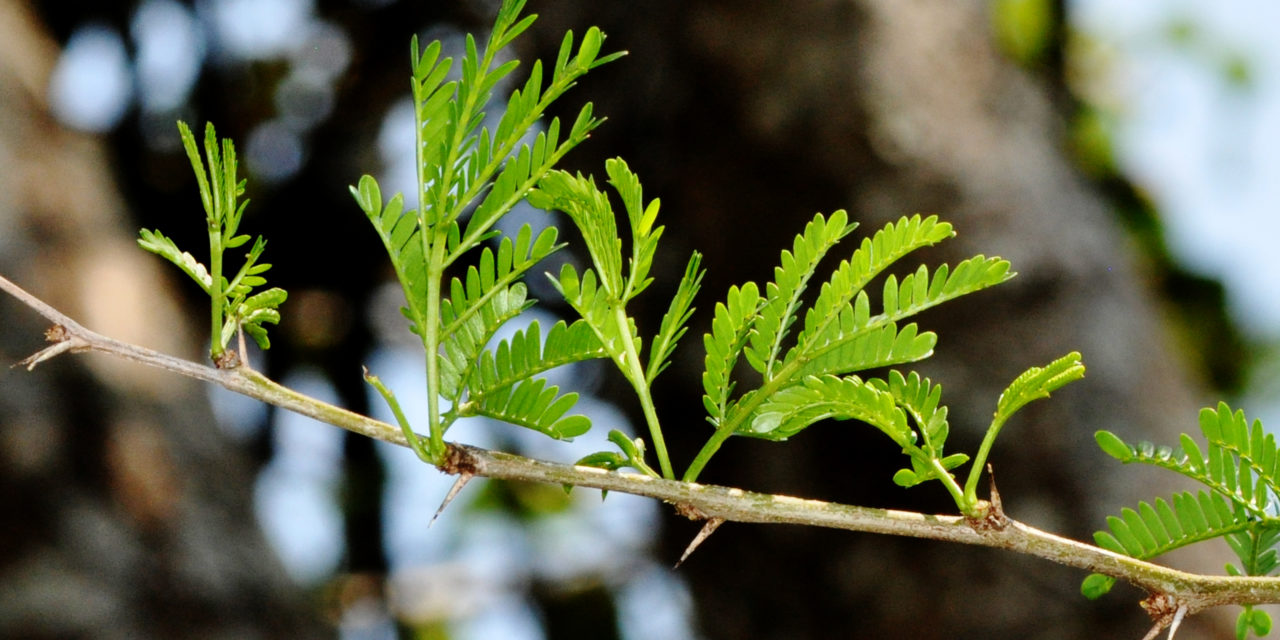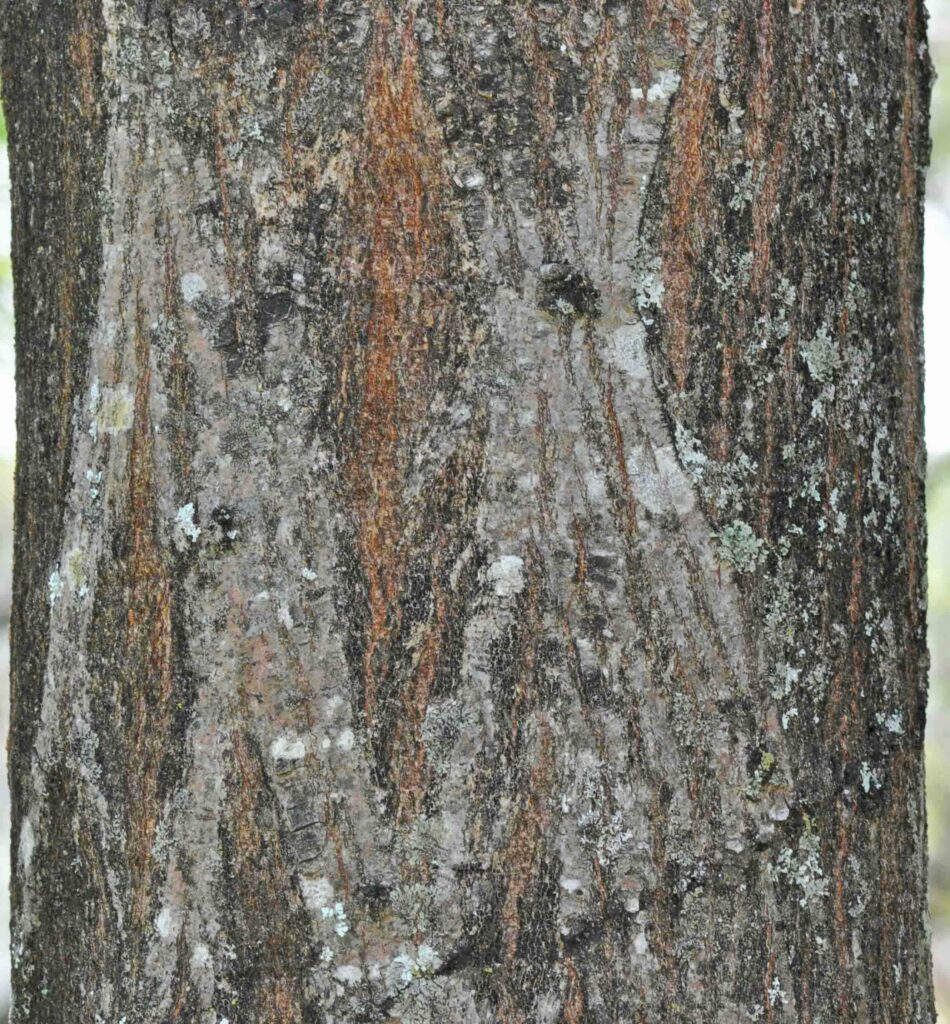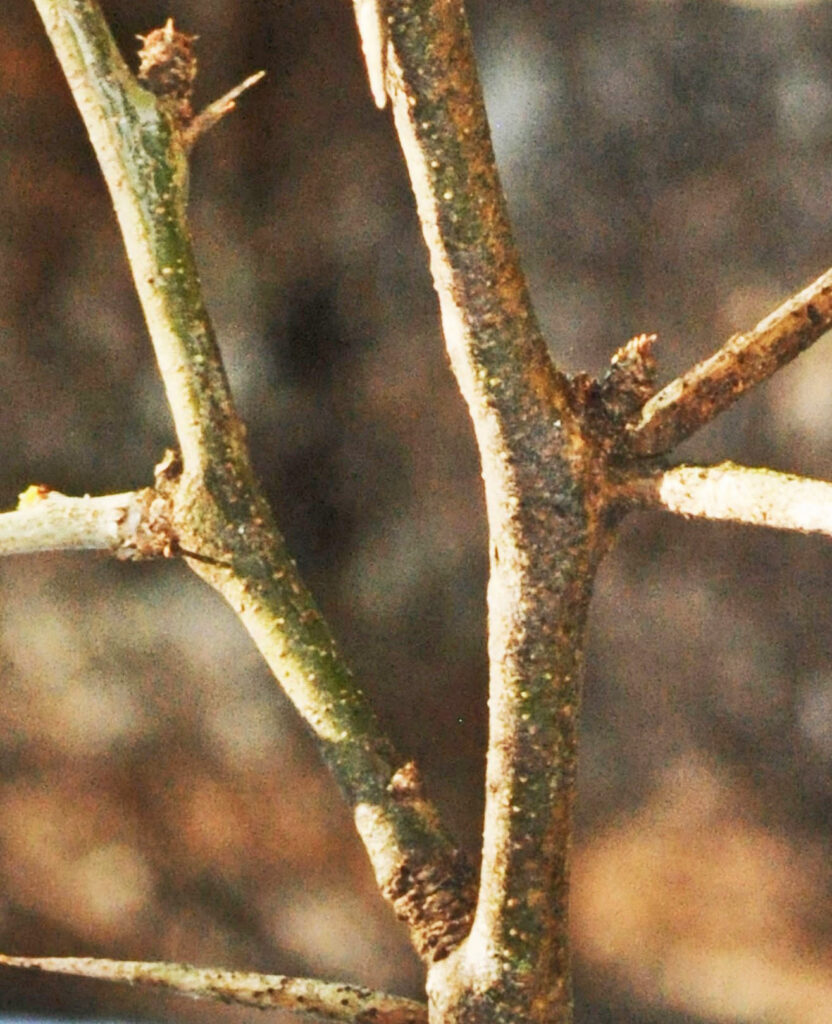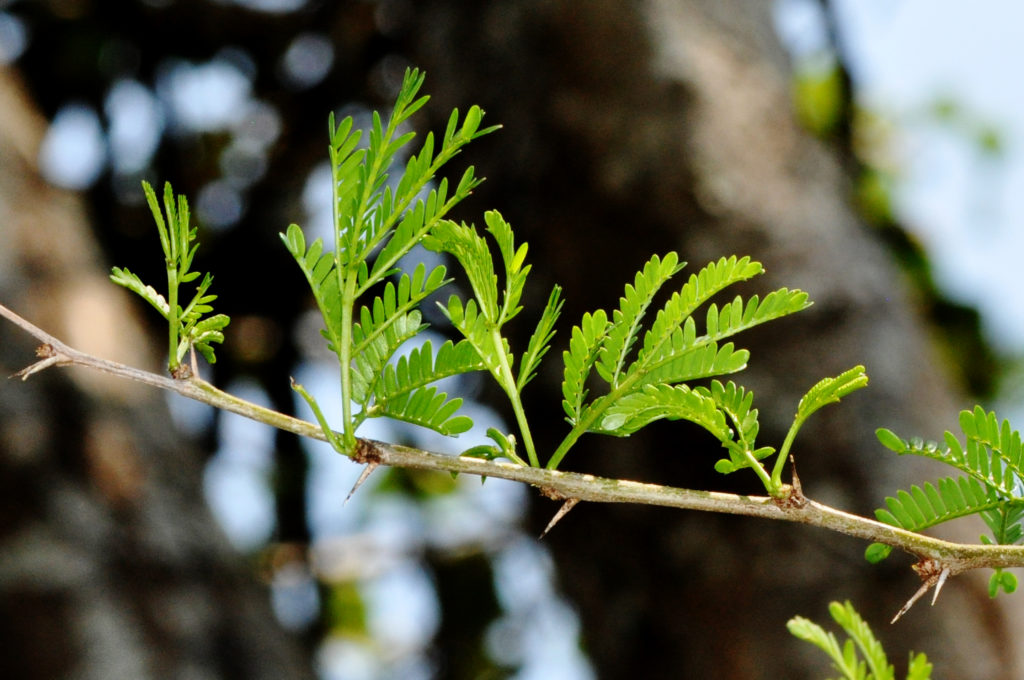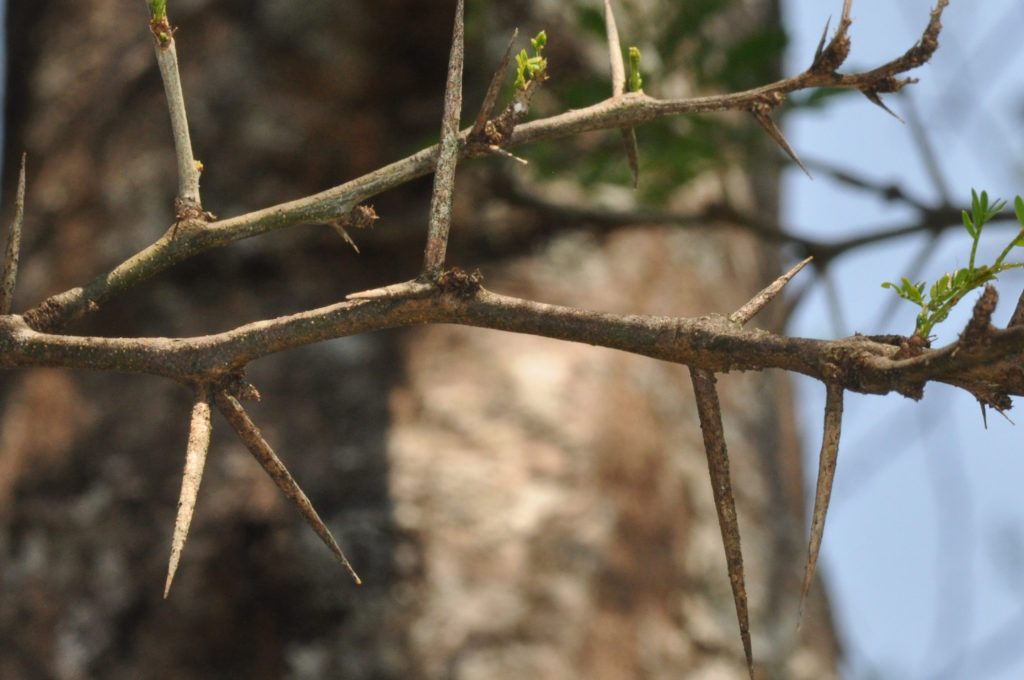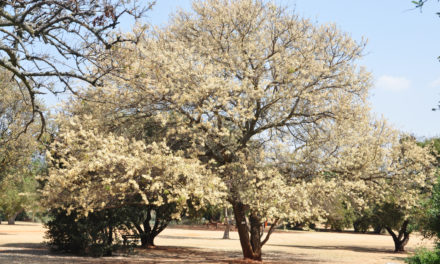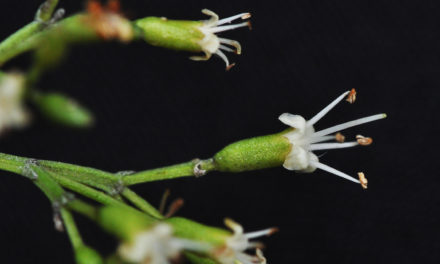General Info – summary
This sparsely branched Tree has light bark, is up to 17m high and occurs close to the coast. Small bipinnate, hairless Leaves have whitish spinescent stipules. Inflorescences contain almost spherical spikes, on short spur branchlets & contains many small yellowish, actinomorphic Flowers. Each has a superior ovary and many exserted stamens. Fruit a pod constricted between greenish, ovate seeds.
Description
Vachellia kosiensis
Previous Names: Acacia kosiensis.
SA Tree No. 172.2.
Common names: (Afr) Duinsoetdooring, (Eng) Dune Thorn, Dune Acacia, Dune Sweet Thorn.
Family: Fabaceae, or Leguminosae (Pea, bean or legume family). After the Orchidaceae and the Asteraceae, the Fabaceae is the third largest Angiosperm (flowering plants) family with 700+ genera and close to 20 000 species. Local Tree genera on this website include Acacia (Vauchellia, Senegalia), Albizia, Bauhinia, Bolusanthus, Burkea, Calpurnia, Colophospermum, Cordyla, Cyclopia, Dichrostachys, Erythrina, Erythrophleum, Faidherbia, Indigofera, Mundulea, Peltophorum, Philenoptera, Piliostigma, Schotia and Xanthocercis. The Fabaceae are recognisable by their fruit and their pinnately compound Leaves. Leaves may also be simple – even bilobed and usually have stipules – some of which may be spinescent. Leaflets are usually entire. Flowers are bisexual and bracteate. Regular flowers usually have 4-5 sepals and the same number of petals. Irregular flowers have 4-5 sepals and 5 or less petals. Stamens have anthers that have 2 pollen sacs and there are usually at least twice the number of stamens as petals – often 10. The superior Ovary has 1 locule containing 1 or more ovules. The Stigma and Style are simple. The single carpel develops into the Fruit, which is usually a pod. The mature pods may dehisce or break into segments. Seeds vary.
Name derivation. Species of the genus Vachellia and Senegalia were considered members of the genus Acacia until 2005. New Names. The genus Vachellia was named after George H. Vachell (1789 – 1839), chaplain and plant collector in China. Here the inflorescence is capitate (head like) and spinescent stipules are present. Plants in the genus Senegalia – (from Senegal) usually do not have spinescent stipules and the inflorescence is usually a spike. kosiensis – referring to Kosi Bay – situated on the North-east coast of South Africa – close to Mozambique. This plant was previously contained within the Acacia karroo now (Vachellia karroo) complex.
Conservation: National Status: L C. (Least Concern). Assessment: 2006 (D.A. Kamundi and J.E. Victor).
Tree
This usually small, slender Tree may reach 17m high – usually less. The long greyish white stem may have persistent spines present. The crown is sparsely branched and trees may form overlapping canopy stands. The Bark is low in tannin and light brown, greyish-white or white. It is smooth or with shallow longitudinal fissures revealing red underlining tissue (photo 917). Present on young bark are pale lenticels (a usually raised corky oval or elongated area on the plant that allows the uncontrolled interchange of gases with the environment – photo 920). Patches Lichen (composite organism arising from a mutualistic relationship between fungi or cyanobacteria and algae species) may be visible on stems – photo 917 may be present on the stems, including the leafy Parmelia spp. Young Stems are bright green or greenish white (photo 920) to almost all white. With time, they become olive green or cream coloured. The young Branches tend to zigzag. Large, paired spines may persist on the main stem as well as the branches.
- 917. 2004/09/15. Lowveld NBG. Photo: David Becking.
- 920. 2004/09/15. Lowveld NBG. Photo: David Becking.
Leaves
The smallish bright green Leaves are bipinnate (compound: twice pinnate). The Rachis (central axis of a compound leaf – excludes petiole) has Pinnae (side branches) not leaflets and the leaflets are on these pinnae. Primary leaves develop 5-7 pairs of pinnae, each nearly 3,5cm long, bearing up to 17 pairs of jugate (in pairs) Pinnules (leaflets – photo 918). Each hairless leaflet has a white base and is up to 6 x 2mm. The hairy Rachis is densely velvety and is up to 2,6cm long. The velvety Petiole (leaf stalk – photo 918) is usually up to 7mm long but may reach 20mm. The paired white to cream-coloured Stipules (basal appendage of the petiole) are spinescent and these spines are short (as little as 2mm) or up to 20cm+ long. They are sharp and may persist on the stem as well as the branches (photos 918 & 920).
- 918. 2004/09/15. Lowveld NBG. Photo: David Becking.
- 920. 2004/09/15. Lowveld NBG. Photo: David Becking.
Flowers
The sparse Flowers are yellow. Groups of 1-4 Inflorescences are in condensed, almost spherical Spikes (simple indeterminate inflorescence with sessile flowers on a single unbranched axis opening in succession towards the apex). They develop on short spur branchlets among the leaves (V. karroo has flowers beyond the ends of branches). Thus, the flowers are almost hidden by the leaves and not at branch ends like Vachellia karroo. Peduncles (stalks of flower cluster -spikes) are relatively long: up to 3,5cm with glands and 1 or 2 sterile flowers in the involucres (one or more whorls of small leaves or bracts standing underneath a flower or flower spikes). There are up to 102 tiny flowers per spherical inflorescence. Flowers are actinomorphic (Regular, symmetrical. Flowers are vertically divisible into similar halves by more than 1 plane passing through the axis). With the exception of a few male flowers that are larger than the others, the flowers are bisexual. Each fertile flower has are many exserted (sticking out; projecting beyond) Stamens that are free and distinct. The Filaments are yellow and help provide the colour to the flowers. Below the anther and attached to the filament is a multicellular gland which is easily detached and may be a means of rewarding visiting insects. It may also inhibit ants from interfering with pollinators. The single Pistil (the female element of the flower composed of the ovary, style and stigma) has a short stalk. The Ovary is superior (said of an ovary that is free from the calyx or perianth) and contains one locule (compartment). The single filiform (thread or filament like) Style extends – moving the small, terminal and concave Stigma past the stamens. The pollen in each flower is shed before the stigma extends and becomes receptive. This late female development and extension of the stigma help to promote cross-pollination. (Nov-Apr +).
Fruit
The ripening Fruit is a slightly sickle-shaped Pod that is distinctly constricted between the ovate (egg-shaped) seeds and is up to 19 x 0,7cm. Mature pods turn a reddish brown and open on both sides. The pod reaches full size before the seed development is complete. The Seeds are olive-green, glossy and relatively large. (Feb-Aug).
Distribution & Ecology
Vachellia kosiensis is a Southern African Endemic (restricted to a particular geographic location) – in this case from Maputu in southern Mozambique to the Tugela River in KwaZulu-Natal. These trees develop in dense groups, in high rainfall areas along the warm coast. They grow well in deep sandy coastal soils. These Trees are coastal pioneers (hardy species that are the first to colonize new or previously disturbed areas). They help stabilise the soil and may eventually give way to other forest trees. These plants have Coppice Growth (the ability to regenerate from the damaged stump or roots e.g. after a fire). The strong sweet scented and nectar rich flowers attract insects that lay eggs that develop into larvae in the pods. The larvae attract birds like the Southern Black Tits (Melaniparus niger niger) that are able, with their powerful beaks, to open the developing pods and consume the larvae.
Ethnobotany
Because of its water use efficiency and growth rate, this tree may be planted in dry areas. These plants grow quickly from seeds. They contain flavonoids (a group of plant metabolites thought to provide health benefits through cell signalling pathways and antioxidant effects). The Bark has a low level of tannin and is not suitable for tanning. Excellent charcoal is made from the Wood.
References
Boon, R. 2010. Pooley’s Trees of eastern South Africa. Flora and Fauna Publications Trust, Durban.
Burrows, J.E., Burrows, S.M., Lotter, M.C. & Schmidt, E. 2018. Trees and Shrubs Mozambique. Publishing Print Matters (Pty) Ltd. Noordhoek, Cape Town.
Coates Palgrave, M. 2002. Keith Coates Palgrave Trees of Southern Africa, edn 3. Struik, Cape Town.
Kamundi, D.A. & Victor, J.E. 2006. Vachellia kosiensis (P.P.Sw. & Coates Palgr.) Kyal. & Boatwr. National Assessment: Red List of South African Plants version . Accessed on 2024/03/05.
Lawrence, G. H. M, 1951. Taxonomy of Vascular Plants. The Macmillan Company, New York. Tenth Printing 1965.
http://www.acacia-world.net/index.php/africa-me/south-africa/the-vachellia-karroo-complex
http://repository.up.ac.za/bitstream/handle/2263/44976/Robbertse_Phenology_2014.pdf;sequence=1
http://posa.sanbi.org/flora/browse.php?src=SP
http://www.acacia-world.net/index.php/africa-me/south-africa/acacia-kraussiana/

